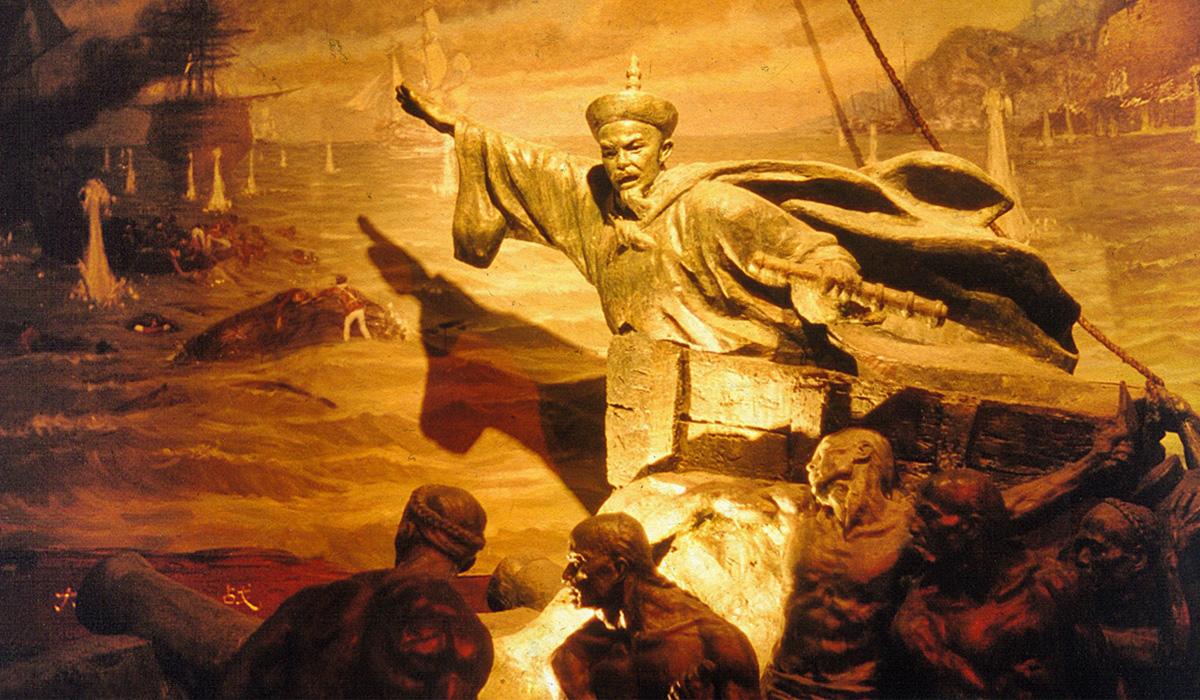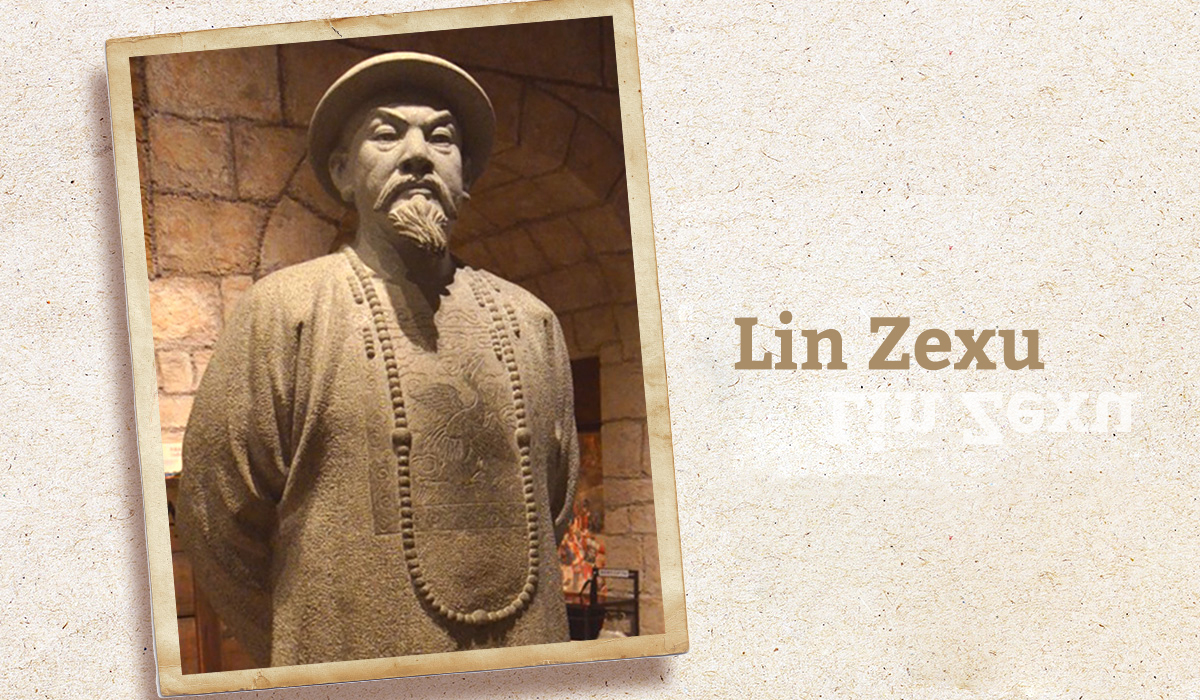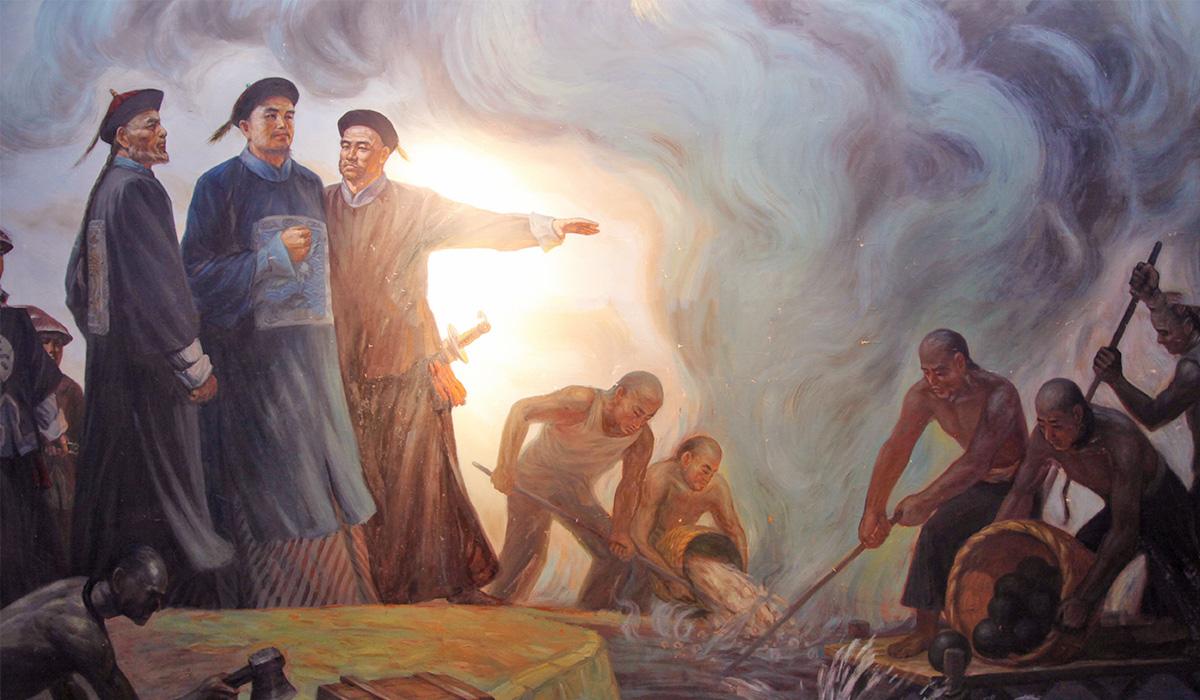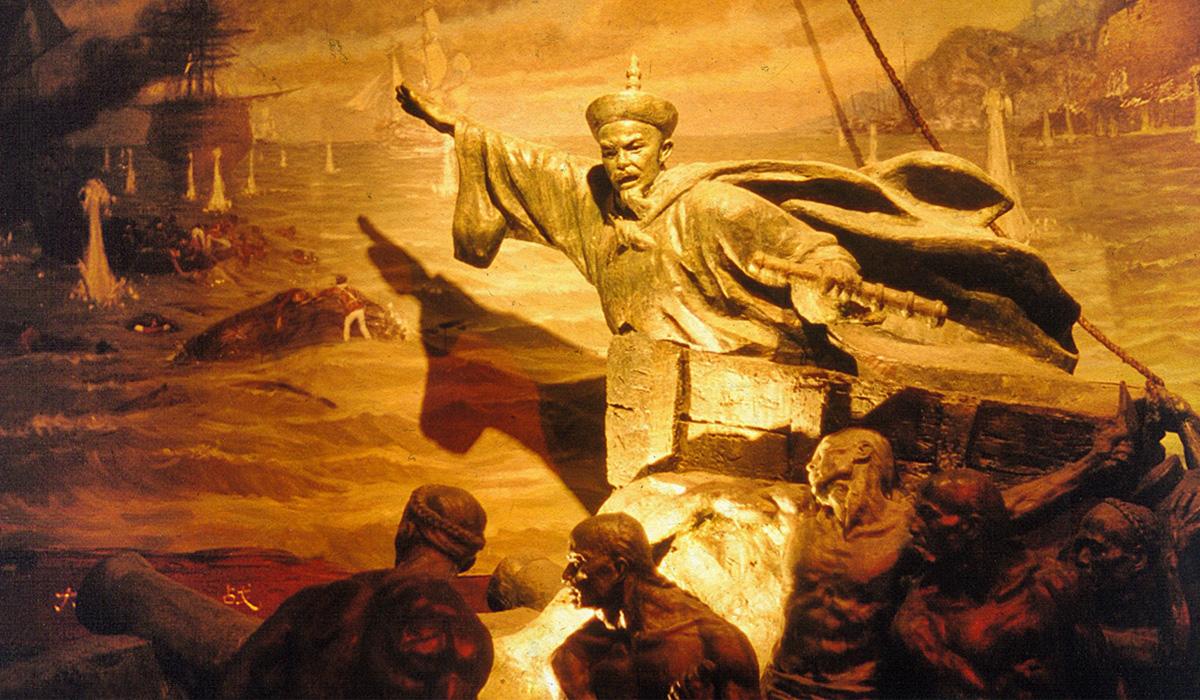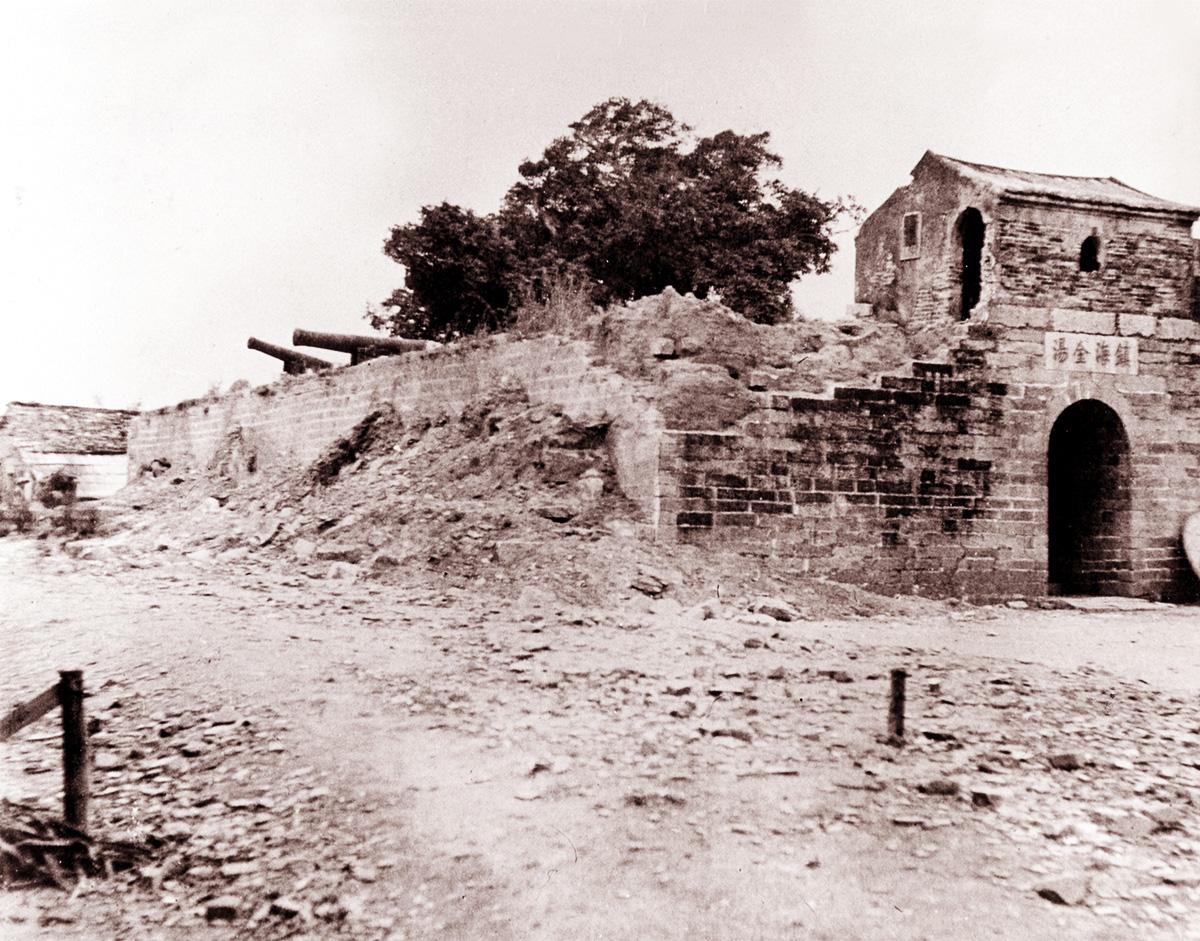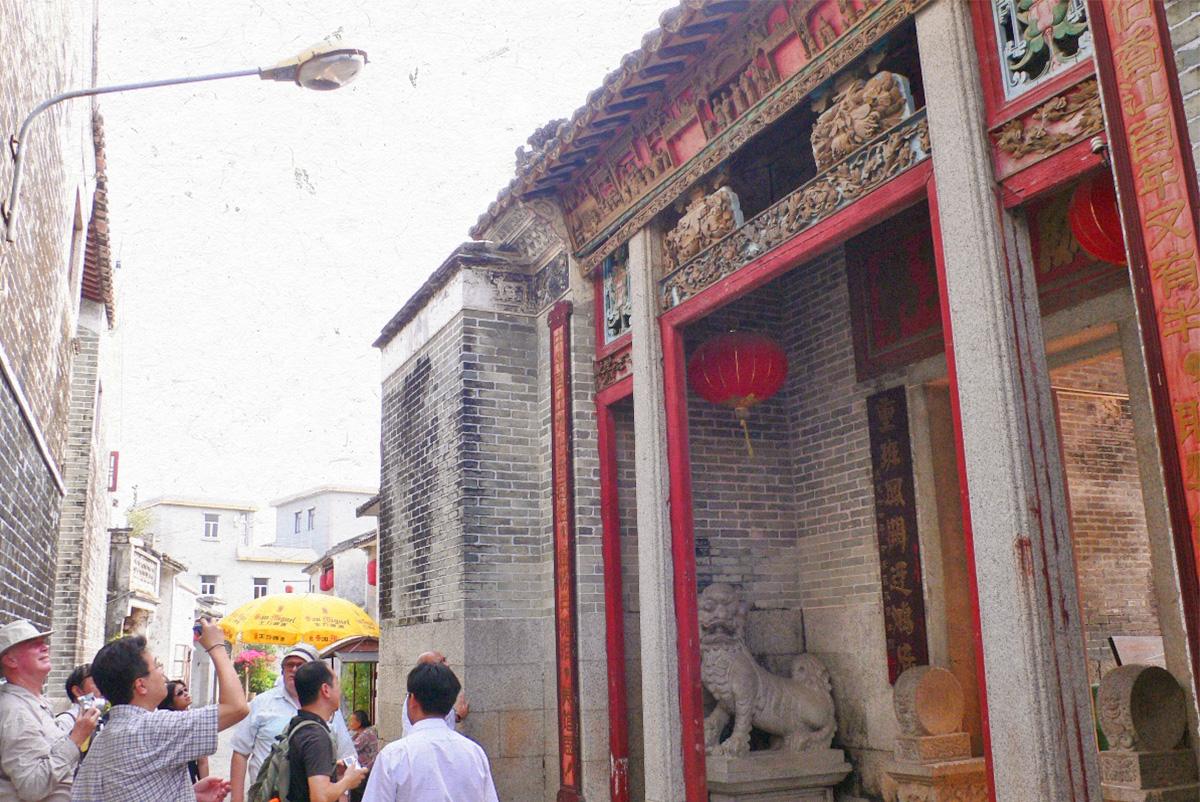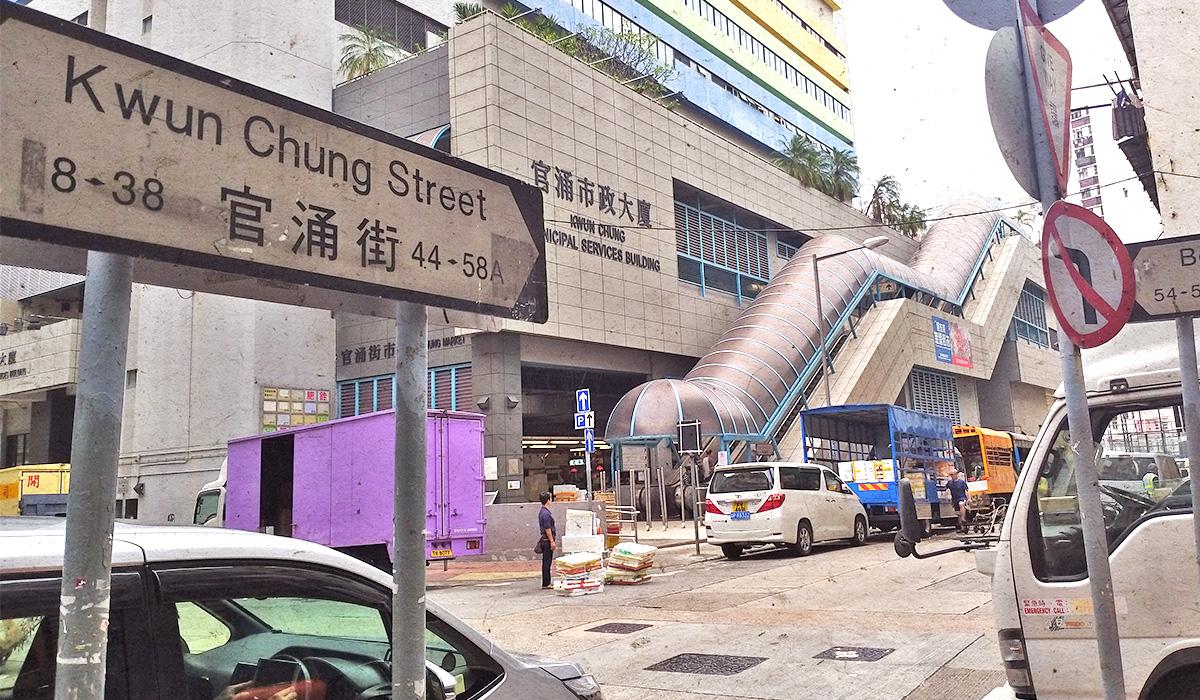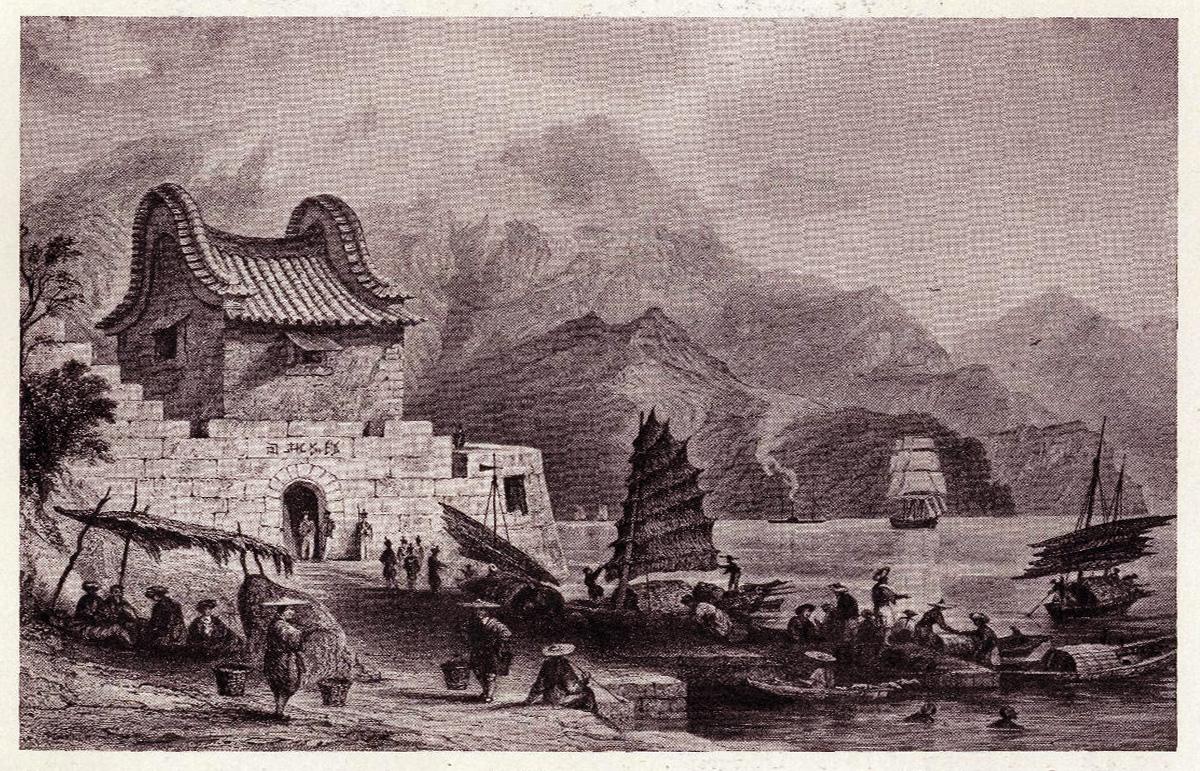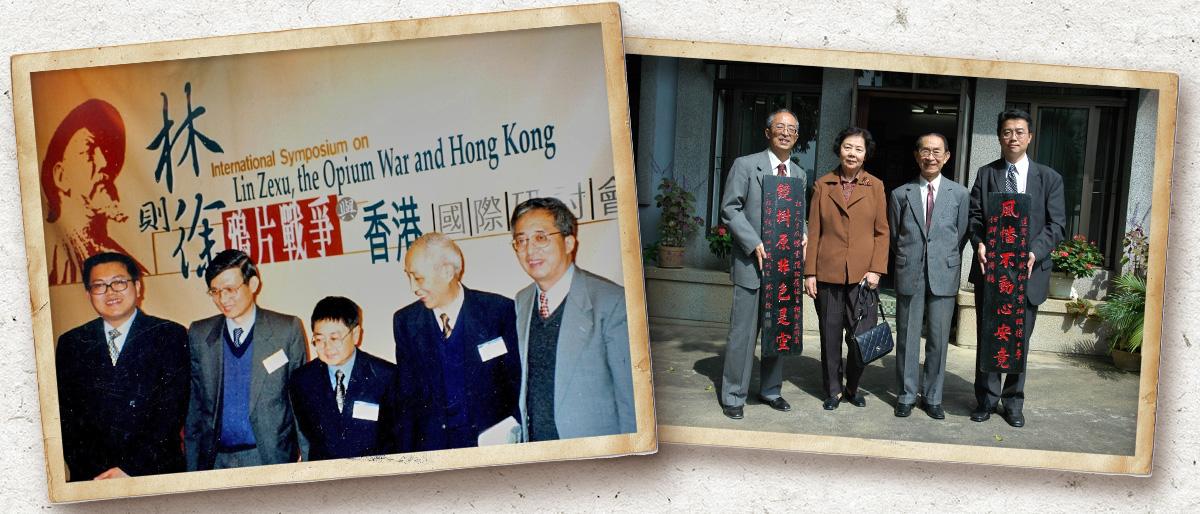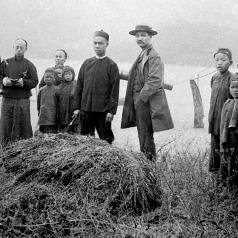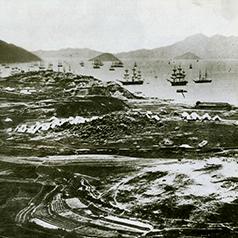Widespread opium use caused many problems in China, including harming people’s health, corrupting social values, jeopardising the army, and severely depleting fiscal reserves. To address these problems, Emperor Daoguang (道光帝) appointed Lin Zexu (林則徐) as Imperial Commissioner with responsibility to eradicate opium importation and use in Guangdong (廣東).
Lin confiscated over 20,000 chests of raw opium from the Britain-led foreign opium merchants and destroyed them on Humen (虎門) beach in June 1839. The British suffered great financial loss and therefore they planned a forceful retaliation. China and Britain were on the edge of war.
Before the outbreak of the First Opium War, China and Britain had already had three skirmishes, including the Battle of Kowloon (九龍海戰), the Battle of Chuenpi (穿鼻之戰) and the Battle of Kwun Chung (官涌之戰). Two of them occurred in the Hong Kong territory. On 4 September 1839, Charles Elliot, the Chief Superintendent of British Trade in China, commanded three clippers to Kowloon Mountain for buying food forcefully. They were challenged by the Qing (清) battleships and Charles Elliot commanded to fire. The Qing fleet and coastal forts responded fiercely, resulting in a number of British soldiers’ casualties and Elliot being almost killed. Between 3 and 13 November 1839, the British forces attacked Kwun Chung six times but were defeated by the Qing forces garrisoned there. The British battleships and opium merchant ships fled the waters of Tsim Sha Tsui.
|
|
Two of the three skirmishes before the First Opium War broke out in Hong Kong. What is its implication to the strategic position of Hong Kong? |
|
|
See answer below. |
The statue of Lin Zexu in the Hong Kong Museum of History.
In June 1839, Lin Zexu destroyed the raw opium at Humen by mixing it with seawater and throwing it into the sea. (Photo source: Visual China Group)
On 4 September 1839, General Lai Enjue (賴恩爵) of the Dapeng Brigade (大鵬協) commanding the Battle of Kowloon.
Kowloon Fort in the late 19th century. During the Battle of Kowloon, the Qing forces bombarded the British fleet from there. (Photo provided by Ko Tim-keung)
General Lai Enjue’s residence in the Dapeng Fortress (大鵬所城).
Between 3 and 13 November 1839, the British forces attacked Kwun Chung but were repelled by the defenders. The photo shows present-day Kwun Chung Street in Kowloon.
Kwun Chung Street was constructed in 1909. At that time, the government levelled Kwun Chung Mountain (where a fort was located) to excavate materials for building the embankment for Yau Ma Tei Typhoon Shelter. A new road named Kwun Chung Road was constructed on the original site.
After the Battle of Kwun Chung, Lin Zexu asked for the Emperor’s permission to build a fort in Tsim Sha Tsui and Kwun Chung respectively. The photo shows a panoramic view of Fort Victoria (or Tsim Sha Tusi Fort) in Tsim Sha Tsui.
The close-up of Fort Victoria. It was demolished by the British forces in 1841.
Kwun Chung Fort was located in Battery Street in Kowloon.
Two of the three skirmishes before the First Opium War broke out in Hong Kong. This shows that the history of Hong Kong is closely related to Lin Zexu and the First Opium War. Related researches are still going on over a century later. Photos: the “International Symposium on Lin Zexu, the Opium War and Hong Kong” in Hong Kong in 1998 (left); in 2005, Ling Qing (﹝凌青﹞, second from right), a fifth-generation descendant of Lin Zexu and the former Permanent Mission of the People’s Republic of China to the United Nations, visiting Ching Leung Fat Yuen in Tuen Mun with his spouse to examine a wooden couplet that bears Lin’s calligraphy.
|
|
Two of the three skirmishes before the Opium War broke out in Hong Kong. What is its implication to the strategic position of Hong Kong? |
|
|
Hong Kong occupied an important strategic position in South China. In fact, garrisons were sent to Tuen Mun during the Tang dynasty (唐朝). Hong Kong was part of the region responsible for fending off pirates during the Ming (明) and Qing dynasties. The strategic value of Hong Kong manifested itself in the Battle of Kowloon and the Battle of Kwun Chung before the First Opium War, as well as the cession of Hong Kong Island to Britain in the aftermath. |
Unless otherwise specified, the images in this material are provided by Professor Lau Chi-pang and Professor Liu Shuyong. Every effort has been made to trace the copyright holders and obtain permission to reproduce this material. Please do get in touch with any enquiries or any information relating to this image or the rights holder.




